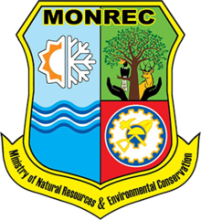Resource information
... Without local support, the long-term existence of PAs is not assured (Wells and McShane 2004). Local people are unlikely to support PAs if they have negative perceptions
and attitudes toward them (Alkan et al. 2009). An attitude is a cognitive evaluation of a particular entity with favor or disfavor, and it reflects the beliefs that people hold about the attitude object or entity (Eagly and Chaiken 1998). Beliefs are the associations that people establish between the attitude object and various attributes (Allendorf 2007). Attitudes toward PAs, conservation, or wildlife may be influenced by PA staff or management interventions, local economic needs and history, or other indirectly related socioeconomic factors such as government policy. The cognitions or thoughts that are associated with attitudes are typically termed beliefs by attitude theorists (Eagly and Chaiken 1998). Perception refers to people’s beliefs that derive from their experiences and interaction with a program or activity. Xu et al. (2006) argue that local people’s perceptions are related to costs and benefits produced by PAs, their dependence on PA resources, and their knowledge about PAs.
The influences of socioeconomic characteristics on local people’s perceptions and attitudes toward an adjacent PA are often site-specific and inconsistent (Allendorf et al. 2006; Baral and Heinen 2007; Mehta and Heinen 2001; Rao et al. 2003; Shibia 2010; Shrestha and Alavalapati 2006; Xu et al. 2006). Some studies report that education is a strong predictor of attitude (Allendorf et al. 2006; Mehta and Heinen 2001; Shibia 2010; Shrestha and Alavalapati 2006; Xu et al. 2006), while others have found no correlation between educational status and people’s perceptions and attitudes (Baral and Heinen 2007; Mehta and Heinen 2001). Mehta and Heinen (2001), Allendorf et al. (2006), and Xu et al. (2006) reported that women were less likely to hold positive attitudes, whereas Baral and Heinen (2007) and Shibia (2010) found no correlation between gender and attitude. Allendorf et al. (2006) and Shrestha and Alavalapati (2006) found that individuals from larger families have negative attitudes to PAs, whereas Xu et al. (2006) reported that individuals from larger families
hold positive attitudes toward PAs.
Jim and Xu (2002) and Alkan et al. (2009) argue that local people’s perceptions and attitudes are shaped by their knowledge about the neighboring PA. This knowledge might include objectives, activities, size, regulations, or location of the boundary of PAs (Jim and Xu 2002; Rao et al. 2003; Xu et al. 2006). The knowledge is gained empirically through one’s perceptions, and it is the recognition of something sensed or felt (Ziadat 2010). It is important to investigate whether more knowledge of PAs
would be associated with positive perceptions and attitudes toward them. We examined the effects of both knowledge and socioeconomic factors on the perceptions and attitudes of local people toward Popa Mountain Park, in central Myanmar, and its management through a questionnaire survey.
Myanmar is one of the biodiversity hotspots in the world, and its PAs play a crucial role in conserving the country’s rich biodiversity (Myers et al. 2000). During the last 10 years the number of protected areas in Myanmar has increased from 20 to 42, covering 7.3% of total land area of the country (Nature and Wildlife Conservation Division 2008). The Nature and Wildlife Conservation Division (NWCD)
of the Forest Department, Ministry of Forestry, is mainly responsible for PA management in Myanmar. Generally, PAs in Myanmar can be categorized into national park, marine park, wildlife sanctuary, nature reserve, and zoo park. Although
Myanmar’s PAs do not fully conform to PA categories of the International Union of Conservation of Nature (IUCN), they are most similar to IUCN category IV (Aung 2007).
Myanmar’s PA management rules and regulations prohibit local people from using resources within PAs. Conflicts arise as local people often have no other source of resource than the PA. Rao, Rabinowitz, and Khaing (2002) reported that nontimber forest products were extracted from 85% and fuelwood was collected from more than 50% of PAs in Myanmar. The mean annual population growth rate is 2.1%
(Central Statistics Organisation 2006) and is highest in rural areas where most Myanmar PAs are located. Population increase is linked to an increase in the number of people seeking land for grazing, collecting fuelwood, and extracting timber and other forest products. The rapid growth of PAs and the huge pressures placed on them by the increasing human population are a great challenge for sustainable PA management.
Popa Mountain Park (PMP) possesses a diverse forest ecosystem in central Myanmar where most forests have already disappeared. PMP was selected for the present study for two reasons: (1) a historic relationship between PMP and local communities and (2) high people’s pressure on the park resulting from the high population density together with resource scarcity in the surrounding area. The Forest Department has had great success in the reforestation of Popa Mountain, which is a high priority for forest conservation. It is important to understand local people’s perceptions and attitudes toward PMP for its sustainability. The objectives of the present study were (1) to examine the responses of local people toward the
park and its management and (2) to study how local people’s perceptions and attitudes toward the PA and its management relate to their socioeconomic status and knowledge about the park...



